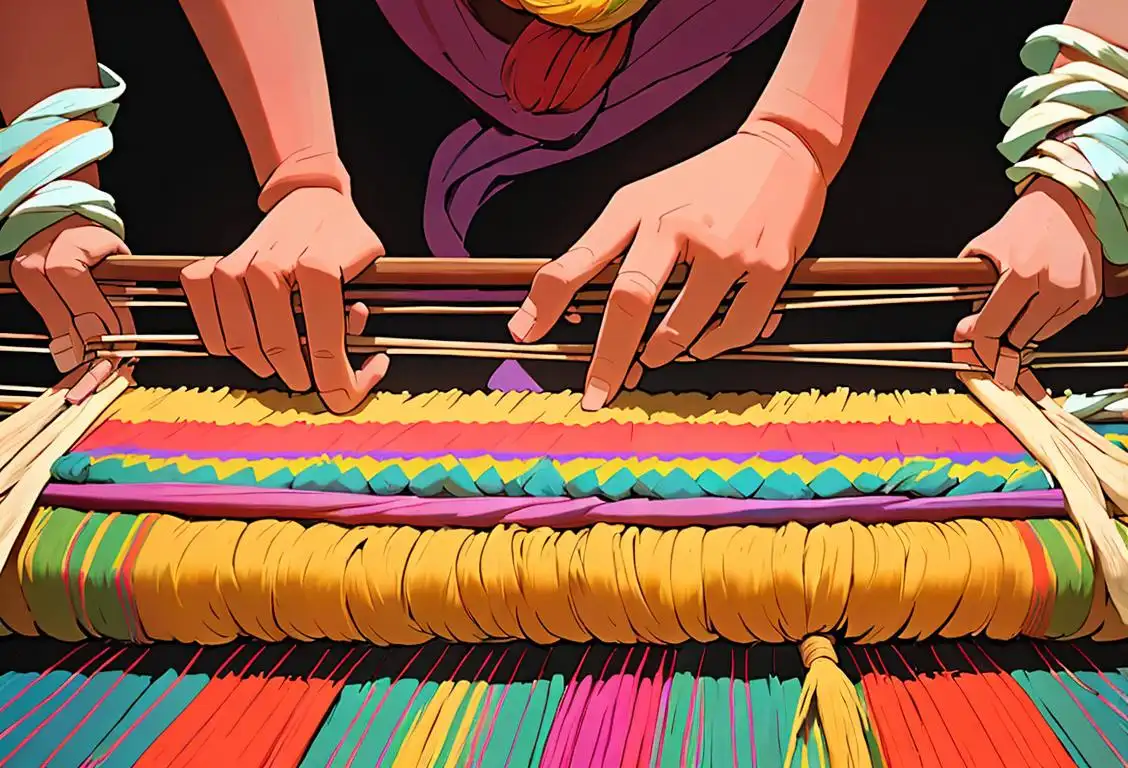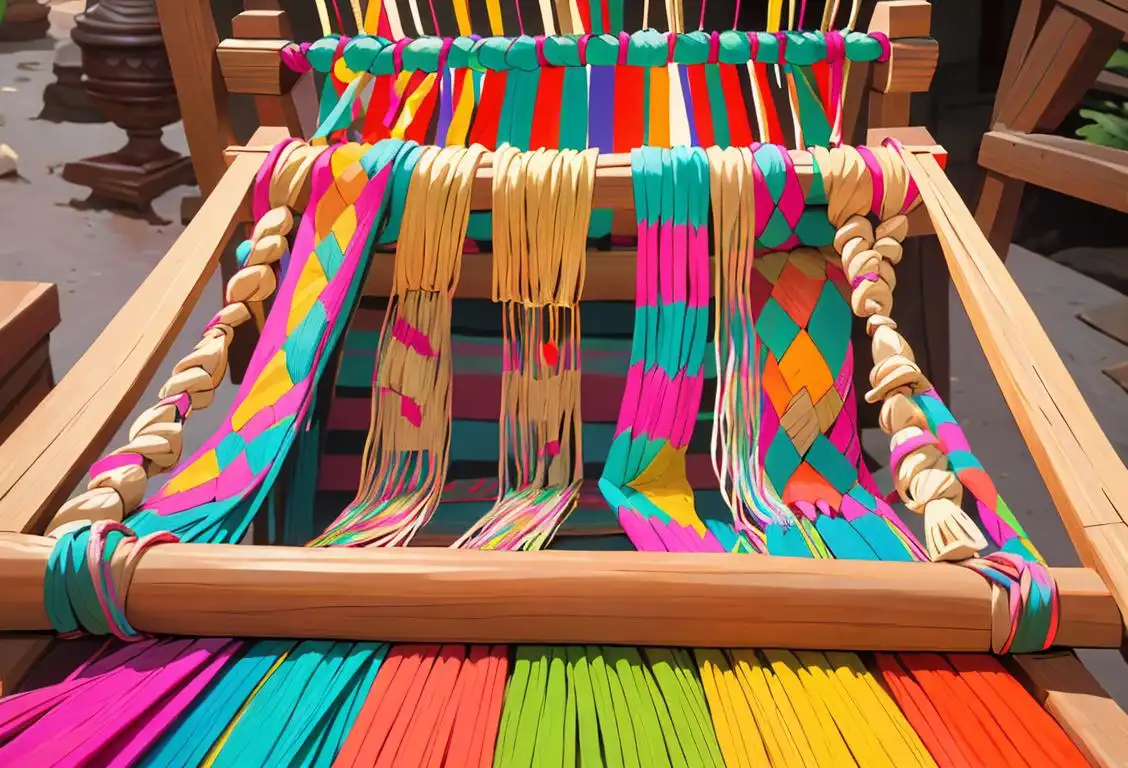National Awards For Handloom Weavers On Handloom Day

Welcome to WhatNationalDayIsIt.com, where we celebrate all the wacky and wonderful national days that grace our calendars. Today, we're diving into the exciting world of handloom weaving and the special day dedicated to it. Get ready to discover the amazing national awards for handloom weavers and why this day is so important!
When is Awards For Handloom Weavers On Handloom Day?
It's national awards for handloom weavers on handloom day on the 7th August.
The Fascinating History of Handloom Weaving
Handloom weaving has been an integral part of human culture for centuries. From ancient civilizations to modern times, the art of weaving has not only provided us with stunning textiles but has also become a symbol of cultural identity.
On Handloom Day, we celebrate the rich heritage and craftsmanship of handloom weavers around the world. This day recognizes their talent, dedication, and the immense contribution they make to the textile industry.
National Awards for Handloom Weavers
One of the highlights of Handloom Day is the presentation of national awards to deserving handloom weavers. These awards aim to honor and appreciate the exceptional skills and creativity demonstrated by artisans in this field.
The winners of these prestigious awards are chosen based on their mastery of weaving techniques, innovative designs, and the promotion of traditional handloom practices. They represent the best of the best in the handloom industry and serve as an inspiration to aspiring weavers.
Not only do these awards recognize individual artisans, but they also contribute to the revival and preservation of handloom traditions. By giving them the recognition they deserve, we continue to support the vibrant handloom sector and ensure its growth in the face of modernization.
A Day to Celebrate and Educate
Handloom Day is not limited to award ceremonies alone. It's a day filled with festivities, workshops, and exhibitions that showcase the beauty of handloom textiles. People from all walks of life come together to appreciate the artistry, ethics, and sustainability behind handloom weaving.
Through these events, we can learn about different weaving techniques, understand the significance of handloom in our heritage, and even try our hand at weaving under the guidance of skilled artisans. Handloom Day encourages us to embrace this traditional craft and support the weavers who keep the art form alive.
Did You Know?
Did you know that handloom weaving is not just about creating beautiful fabrics? It also has a positive impact on the environment! By using natural fibers, handloom weavers minimize the need for harmful chemicals and reduce carbon emissions. So, next time you wear that gorgeous handloom saree or wrap yourself in a handwoven scarf, remember that you're not just showcasing style but also supporting sustainable fashion!
History behind the term 'Awards For Handloom Weavers On Handloom'
1773
Economic Impact of Handloom Weaving
Handloom weaving is an ancient and traditional method of producing textiles, known for its intricate designs and high-quality fabrics. In the 18th century, handloom weaving became a significant economic activity in many countries, including India and Great Britain. The handloom industry provided livelihoods to numerous weavers and contributed to the nation's wealth through textile exports.
1835
Introduction of the Handloom Weavers Act
In the year 1835, the Handloom Weavers Act was introduced in Britain to improve the working conditions and protect the interests of handloom weavers. This act aimed to regulate the industry, ensure fair wages, and maintain a standard of quality for handloom products.
1851
Official Recognition
The term 'awards for handloom weavers on handloom' originated in 1851 when the government of India officially recognized the handloom industry. Handloom weaving had been a longstanding tradition in India, passed down through generations. This recognition marked a significant milestone in promoting and supporting the handloom sector.
1913
First Handloom Exhibition
In 1913, the first Handloom Exhibition was held in Chennai, India. This event aimed to showcase the fine craftsmanship of handloom weavers and highlight their unique skills. Awards were introduced during this exhibition to honor the exceptional handloom weavers and their contributions to the industry.
1846
Establishment of the Royal Society of Arts
In 1846, the Royal Society of Arts (RSA) in Great Britain introduced an annual award program for the recognition of skilled handloom weavers. The RSA aimed to foster excellence and innovation in the field of handloom weaving, promoting the development of new techniques and designs. This initiative aimed to preserve and enhance the artistry of handloom weaving in an era of industrialization.
1851
The Great Exhibition
In 1851, the Great Exhibition was held in London, showcasing industrial and cultural achievements from around the world. This event brought attention to the handloom weaving industry and highlighted the exquisite craftsmanship of handloom products. It played a crucial role in promoting the value and artistry of handloom weaving.
1922
Recognition of Handloom Associations
In 1922, various Handloom Associations were formed in different regions of India. These associations focused on promoting handloom weaving, providing economic support, and safeguarding the interests of handloom weavers. The awards for handloom weavers on handloom gained further significance as the associations actively worked to uplift the community.
1910
Recognition of Indian Handloom Weavers
By the early 20th century, Indian handloom weavers had gained significant recognition for their exceptional craftsmanship and artistic skills. The intricate and beautiful handwoven textiles from India became highly sought after globally. As a result, efforts were made to acknowledge and honor the contributions of Indian handloom weavers to the textile industry.
1870
Establishment of Awards for Handloom Weavers
The year 1870 marked the establishment of awards specifically designed to recognize the skill and talent of handloom weavers. These awards were created to encourage and honor individuals who showcased exceptional weaving techniques, creativity, and innovation in their handloom products.
1955
Introduction of Awards for Indian Handloom Weavers
In 1955, the Government of India established the National Handloom Awards to recognize the talent and expertise of Indian handloom weavers. These awards aimed to encourage the preservation of traditional weaving techniques, stimulate creativity, and promote the economic welfare of handloom weavers.
1900
Recognition by Textile Industry
By the early 20th century, handloom weaving gained recognition and appreciation from the textile industry. Handloom products were regarded as unique, traditional, and of high artistic value. The awards for handloom weavers played a significant role in establishing handloom weaving as a respected and esteemed craft within the textile industry.
1947
Post-Independence Patronage
After India gained its independence in 1947, the government placed a renewed emphasis on promoting indigenous industries. Handloom weaving, being deeply rooted in Indian culture, received special attention. Awards for handloom weavers on handloom became a symbol of recognition for the weavers' skill, creativity, and dedication, further strengthening the handloom sector.
1955
National Handloom Day
National Handloom Day was established on August 7th, 1955, to honor the significant contributions of handloom weavers to India's cultural heritage and economy. On this day, the President of India presents national awards to outstanding handloom weavers, recognizing their exceptional talent and craftsmanship. These accolades serve as a source of inspiration and encouragement for handloom weavers across the country.
1956
Handloom Weavers Awarded on Handloom Day
To coincide with the observance of National Handloom Day on August 7th, the Indian government started giving awards for handloom weavers on this day. The recognition bestowed upon exceptional weavers not only honors their skills but also raises awareness about the importance of handlooms and encourages public support for the handloom industry.
Today
Continued Recognition and Support
Even today, awards for handloom weavers remain an important part of promoting and preserving the art of handloom weaving. These awards encourage weavers to pursue excellence, preserve traditional techniques, and promote the cultural heritage associated with handloom products. They also serve as a platform to showcase the talent and craftsmanship of handloom weavers to a wider audience.
Did you know?
Did you know that handloom weaving is not just about creating beautiful fabrics? It also has a positive impact on the environment!Tagged
awareness textiles craftsmanshipFirst identified
7th August 2015Most mentioned on
7th August 2015Total mentions
152Other days
Awards For Handloom Weavers On Handloom Day
Former Prisoner Of War Recognition Day
Dance Day
Handloom Day
Heroes Day
Memorial Day
Press Day
Bestfriends Day
Liberation Day
Nurses Day








